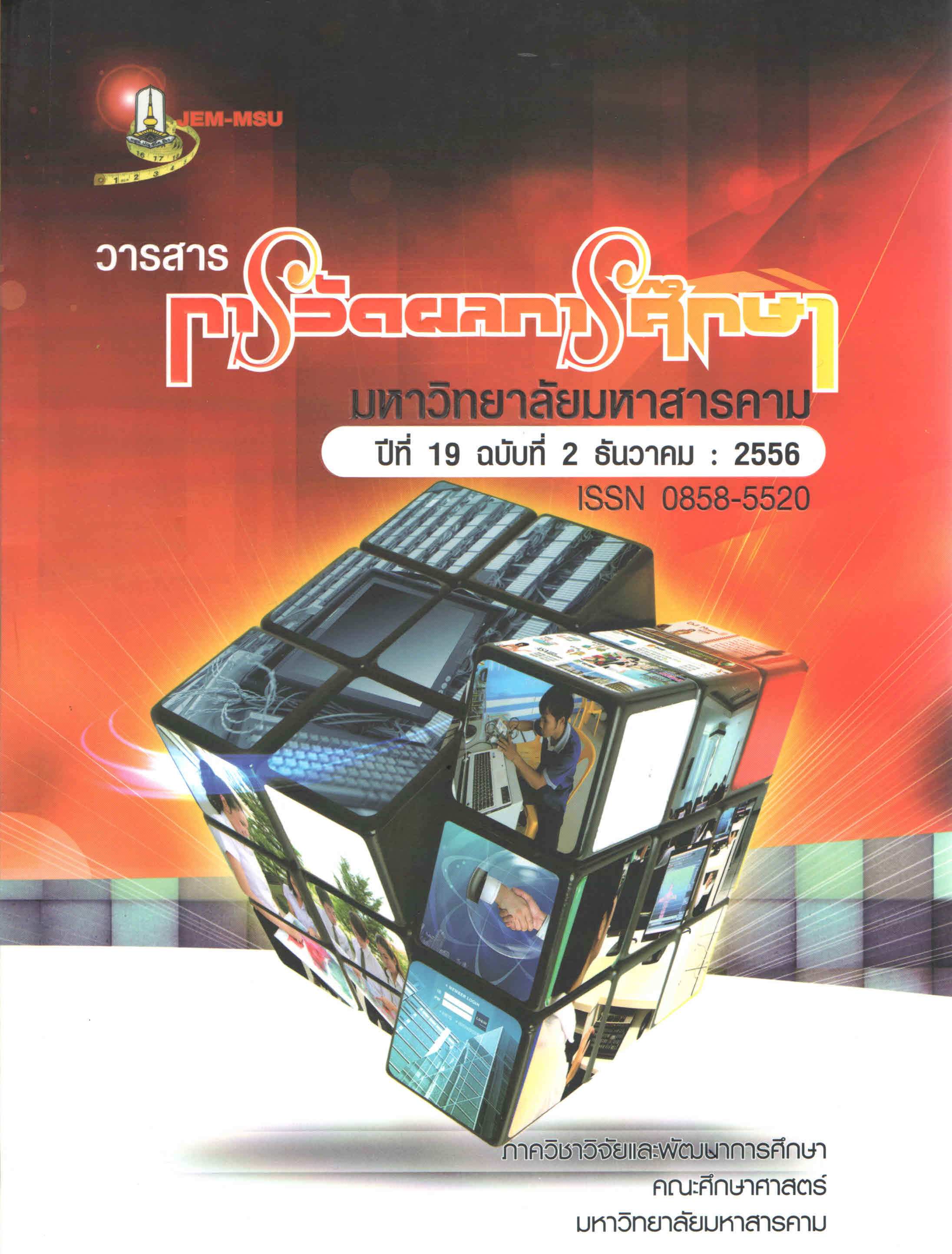A Construction of A Diagnostic Test by Using Item Specification in Mathematics Learning Strand on Probability for Mathayomsuksa 5 students
Main Article Content
Abstract
Learning activity management process requires a concurrence of assessing and
evaluation students’ learning in order to know whether students’ learning occurs or not and how
much, and divide the groups of ones who know or do not know. For the groups who do not
know, there should be supposed to the test seeks the cause of the don't know, already do the
analysis of causes or learning deficits so that students can be individually developed according
to their abilities. Therefore, the study was aimed to construct a qualified learning diagnostic test,
to verify the constructed test in terms of the item discrimination and item difficulty power,
structural validity and the total reliability. Each item had deluded choices which constructed
as the test characters and to investigate the problems on mathematics learning strand about
Probability of Mathayomsuksa 5 students. The sampling group in this research were 330
Mathayomsuksa 5 students in the second semester of academic year of 2011 from 12 schools,
under Kalasin Provincial Administrative Organization by using Simple Random Sampling technique.
The research instruments consisted on Probability of 3 diagnostic tests of choice with 4
alternatives which were constructed in order to investigate learning deficits of choice, true or
false, filling the answers and way of solving with 30 items. The tests were trialed three
times. In the first and second place, the 100–item and 90 – item diagnostic test, respectively,
for investigating learning deficits was tried out with 80 sample students in order to
investigate the item difficulty power and item discrimination power. In the third place,
the 80 - item diagnostic test was tried out with a sample of 100 students in order to
find out the item difficulty and item discrimination power, structural validity and the total
reliability.
The results were as follows:
1. Finding out the quality of the diagnostic tests for learning
On the first trial, from the 100 - item of 3 diagnostic tests found that the
item difficulty power ranging from .21 to .79, the item discrimination power ranging from
.13 to .55. There were 93 items which did meet the criteria, and 90 items which met
the criteria were chosen. On the second trial, from the 90 - item of 3 diagnostic tests
found that the item difficulty power ranging from .29 to .84, the item discrimination power
ranging from -.09 to .63. There were 84 items which did meet the criteria, and 80 items
which met the criteria were chosen. On the third trial, the 80-item of 3 diagnostic tests
found that the item difficulty power ranging from .51 to .69, the item discrimination
power ranging from .22 to .51 and the structural validity at the .05 level of significance.
The total reliability was .96.
2. An analysis of errors the students made in answering the diagnostic test for
learning showed that the errors the students made were they could not remember the
theories and used incorrect method in finding results, not understand how to alternate or
permutation, not understand how to select or combination, be confused between the
permutation and combination.
Article Details
The content and information contained in the published article in the Journal of Educational Measurement Mahasarakham University represent the opinions and responsibilities of the authors directly. The editorial board of the journal is not necessarily in agreement with or responsible for any of the content.
The articles, data, content, images, etc. that have been published in the Journal of Educational Measurement Mahasarakham University are copyrighted by the journal. If any individual or organization wishes to reproduce or perform any actions involving the entirety or any part of the content, they must obtain written permission from the Journal of Educational Measurement Mahasarakham University.


